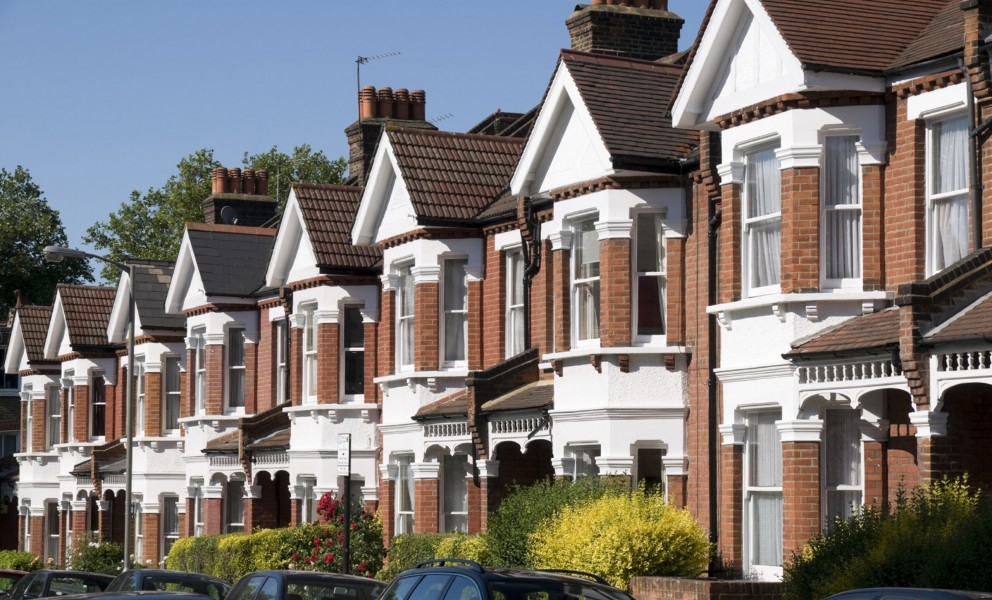 Photo: Pixabay
Photo: PixabayEuropeans are deeply concerned about their heating bills this winter, due to the dramatic increase in energy prices following Russia's invasion of Ukraine.
The European Commission has called on all countries to prioritize the insulation of their buildings this winter.
But not all citizens across Europe feel the cold - or their electricity bills - equally. Recent research shows that home temperature losses vary considerably across the continent.
The differences are seen through the quality of the insulation of the buildings, because the outside temperatures are standardized at 0°C for all analyzed countries.
Heat losses in homes, according to data reported by Euronews, are the highest in Great Britain, which has the oldest housing stock: as many as 37 percent of homes on the Island were built before 1946.
The intelligent home climate management company "tado°" surveyed 80,000 homes in 11 European countries between December 2019 and January 2020 to come to this conclusion.
A UK home with an indoor temperature of 20°C and an outdoor temperature of 0°C was found to lose an average of 3°C after five hours.
WHICH COUNTRY HAS THE BEST INSULATION?
Norway with 0.9°C and Germany with 1°C are the countries with the lowest losses of heated home temperature.
This means that houses in the UK lose heat three times faster than houses in Norway and Germany.
Britain is followed by Belgium (2.9 °C), France (2.5 °C), the Netherlands (2.4 °C) and Spain (2.2 °C). Heat loss is higher in these five countries than the average loss (1.8 °C) of all evaluated countries.
Sweden, Denmark and Austria have an average home temperature loss of 1.2 °C. In Italy, this value is 1.5 °C.
ENERGY COSTS ARE MORE THAN DOUBLE FOR OLD HOUSES
The age of the house has a big impact on heat loss - as well as a number of other energy efficiency measures.
In the UK, research by the Office for National Statistics – based on energy performance certificates – shows that energy costs for older homes are more than double those of newer ones.
Put into perspective: in England in 2019, the average estimated annual energy cost for an older home was £885 (€1,028), compared to just £399 (€463) for a newer home.
Climate campaign group Insulate Britain is not alone in calling for Britain to better insulate homes. The Royal Institute of British Architects (RIBA) campaigned for the mass insulation of England's interwar suburbs.
"A very large proportion of these have had no wall improvements since construction, meaning they have no insulation whatsoever," the RIBA report said. It has been calculated that proper insulation, double or triple glazing and replacing gas boilers in 3.3 million inter-war homes could reduce the country's carbon emissions by a significant four per cent.
MOST HOUSES WERE BUILT BEFORE THE FIRST HEAT REGULATIONS
According to the EU Building Stock Observatory, most residential buildings in the EU were built before the introduction of the first thermal standards in the 1970s. These energy efficiency measures were introduced after the oil crisis caused by war and political turmoil in the Middle East.
In general, the higher the proportion of new residential buildings, the higher the overall energy performance of the building will be.
In the EU, 23 percent of houses were built before 1945, and 26 percent were built between 1945 and 1969, according to data from 2014. This means that almost half of all houses were built before 1970. Only 23 percent were built after 1990.
WHICH EUROPEAN COUNTRIES HAVE THE OLDEST HOMES?
Looking at the share of houses built before 1945, Great Britain tops the list with 36.5 percent, followed by Belgium (33.9 percent) and Denmark (31.9 percent).
Cyprus has the lowest share of houses built before 1945 - only 3 percent. In Greece it is 7.3 percent, followed by Romania (11.1 percent). In 13 EU countries, the share of houses built before 1945 is above 20 percent.
The UK also tops the list of homes built before 1970, with 62 percent. Sweden (60.5 percent), Germany (59.4 percent) and Lithuania (59.1 percent) closely follow Great Britain. This figure is also high in Denmark (58.9 percent) and Belgium (58.5 percent).
There are only six countries where less than one third of homes were built before 1970. These are Cyprus, Greece, Spain, Ireland, Malta and Finland.
WHICH EUROPEAN COUNTRIES HAVE THE YOUNGEST APARTMENTS AND HOUSES?
The share of homes built between 1990 and 2014 is the highest in Cyprus. More than half of the houses (54.2 percent) on this island were built after 1990. Ireland (45.2 percent) and Luxembourg (41.6 percent) follow.
Lithuania, Slovakia and Latvia have the lowest share of houses built after 1990 with less than 13 percent. In the EU, as of 2014, 22.6 percent of houses were built after 1990.
WHAT DOES THE EU PROPOSAL?
Improving the energy efficiency of the housing stock is becoming increasingly critical in many countries in light of rising energy prices.
The European Commission presented the REPowerEU plan for energy saving, clean energy production and diversification of energy supply. The plan also emphasizes the importance of building insulation.
"The most immediate savings can be achieved through better insulation equipment for high temperatures," it says. Why? Because these measures have an extremely short payback time.
The Commission therefore calls on the member states to make full use of support measures such as reduced VAT rates for highly efficient heating systems and insulation in buildings, writes invester.me.
Source: investor.me